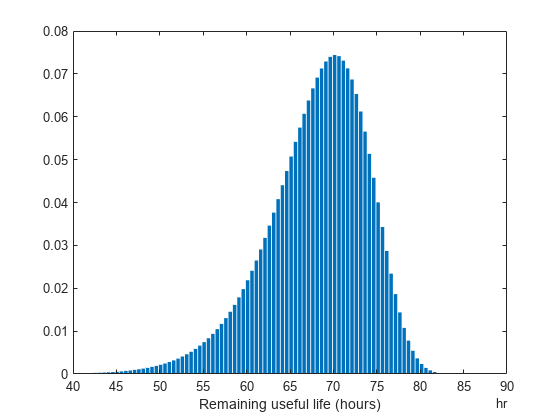reliabilitySurvivalModel
Probabilistic failure-time model for estimating remaining useful life
Description
Use reliabilitySurvivalModel to estimate the remaining
useful life (RUL) of a component using a probability distribution of component failure
times. Reliability survival models are useful when the only data you have are the
failure times for an ensemble of similar components, such as multiple machines
manufactured to the same specifications.
To configure a reliabilitySurvivalModel object for a specific
type of component, use fit,
which estimates the probability distribution coefficients from a collection of
failure-time data. Once you configure the parameters of your reliability survival model,
you can then predict the remaining useful life of similar components using predictRUL. For a basic example illustrating RUL prediction, see
Update RUL Prediction as Data Arrives.
For general information on predicting remaining useful life, see Models for Predicting Remaining Useful Life.
Creation
Syntax
Description
mdl = reliabilitySurvivalModel
mdl = reliabilitySurvivalModel(distribution)Distribution property of
the model.
mdl = reliabilitySurvivalModel(initModel)reliabilitySurvivalModel object
initModel.
mdl = reliabilitySurvivalModel(___,Name,Value)reliabilitySurvivalModel('LifeTimeUnit',"days") creates a
reliability survival model that uses days as a lifetime unit. You can specify
multiple name-value pairs. Enclose each property name in quotes.
Input Arguments
Properties
Object Functions
predictRUL | Estimate remaining useful life for a test component |
fit | Estimate parameters of remaining useful life model using historical data |
Examples
Extended Capabilities
Version History
Introduced in R2018a


